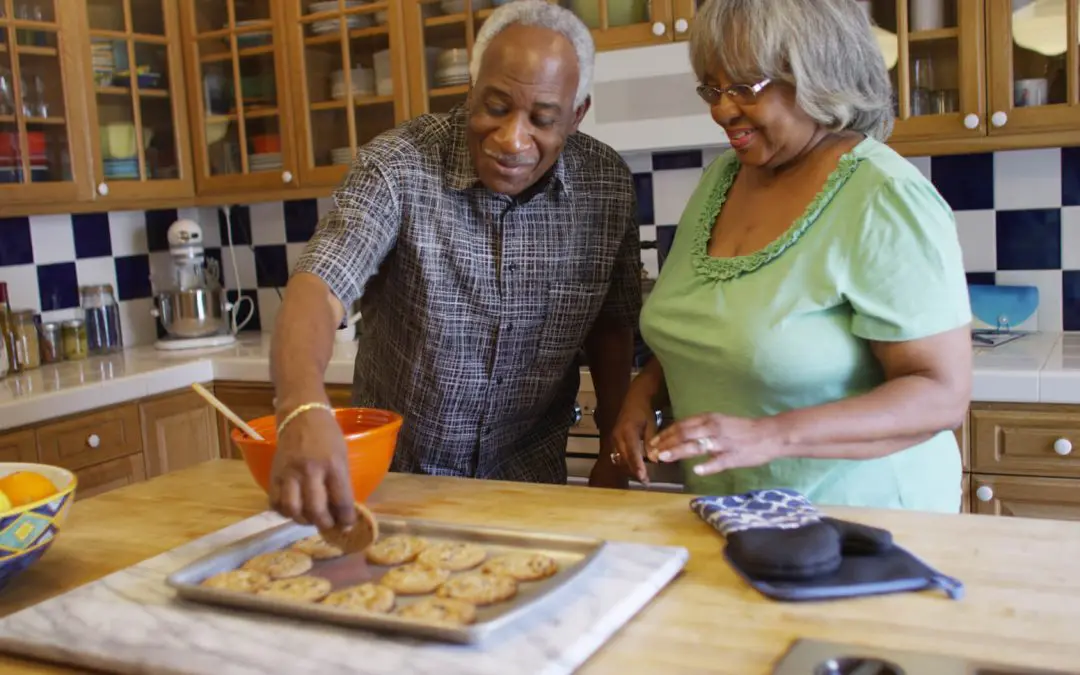Creating a safe and comfortable living environment for seniors is essential for their well-being and independence. As we age, our needs and capabilities change, making certain adjustments in the home necessary to prevent accidents and enhance daily living. Here are some key areas to focus on when making a home safe for seniors.
Entryways and Exits are Critical to Make a Home Safe for Seniors
The first step in making a home safe for seniors is to ensure that all entryways and exits are easily accessible. Install ramps or chair lifts if stairs lead to the front or back door. Ensure that walkways are clear of obstacles and well-lit to prevent trips and falls. Adding handrails on both sides of the steps provides additional support.
Living Spaces
Remove any clutter in the main living areas that could pose a tripping hazard. Arrange furniture to allow for easy movement and ensure that frequently used items are within easy reach. Consider replacing rugs with non-slip mats or removing them altogether. Tuck electrical cords away to prevent tripping.
Kitchen Safety
The kitchen can be a particularly hazardous area for seniors. Make sure that all appliances are in good working order and easy to operate. Store frequently used items in lower cabinets to avoid needing step stools. Install smoke and carbon monoxide detectors and check them regularly to ensure they are functioning properly.
Bathroom Modifications
Bathrooms are common sites for falls and injuries among seniors. Install grab bars in the shower and near the toilet to provide support. Consider using a shower chair and a hand-held showerhead to make bathing easier. Non-slip mats should be placed inside and outside the shower or tub. Ensure that the bathroom is well-lit, especially at night.
Bedroom Adjustments to Make a Home Safe for Seniors
In the bedroom, ensure that the bed is at a comfortable height, making it easy to get in and out of. Consider installing bed rails if there is a risk of falling out of bed. Place a lamp or light switch within easy reach of the bed to avoid navigating in the dark. Keep a phone or an emergency alert device within arm’s reach for easy access in case of emergencies.
Stair Safety
If the home has multiple levels, stair safety is crucial. Install sturdy handrails on both sides of the stairs and ensure the steps are well-lit. Consider adding non-slip treads to each step to prevent slipping. Installing a stairlift may be a worthwhile investment for those with mobility issues.
Lighting to Make a Home Safe for Seniors
Proper lighting is essential in preventing falls and ensuring visibility. Use bright, non-glare lighting throughout the home, especially in hallways, staircases, and entryways. Motion-sensor lights can be helpful in areas like bathrooms and hallways, providing light when needed without the need to fumble for a switch.
Emergency Preparedness
Ensure that the home is equipped with a comprehensive emergency plan. This includes easily accessible contact numbers for emergency services, family members, and healthcare providers. Consider installing a medical alert system that allows the senior to call for help at the push of a button. Also, make sure that smoke and carbon monoxide detectors are installed and functioning correctly.
Regular Maintenance and Updates
Regularly inspect the home for potential hazards. Fix loose handrails, replace burned-out light bulbs, and repair damaged flooring. As the senior’s needs change, make the necessary adjustments to their living environment to ensure it remains safe and comfortable.
Professional Assistance to Make a Home Safe for Seniors
Sometimes, it may be beneficial to consult with a professional specializing in home modifications for seniors. Occupational therapists or certified aging-in-place specialists can provide valuable insights and recommendations tailored to the senior’s specific needs.
Addressing these key areas can create a safer and more comfortable home environment for seniors, allowing them to maintain their independence and enjoy their golden years with peace of mind.
FAQs
How can we make outdoor areas safer for seniors?
To make outdoor areas safer, ensure walkways are even and free from cracks. Install handrails along stairs and ramps and provide adequate lighting for pathways and entrances. Keep outdoor areas free from clutter like garden tools or hoses.
Are there any specific flooring types that are safer for seniors?
Non-slip flooring materials such as rubber, cork, or slip-resistant vinyl are ideal for homes with seniors. Avoid high-pile carpets, as they can cause trips. Ensure that all flooring transitions are smooth to prevent tripping.
How can seniors maintain independence while ensuring safety?
Assistive devices like walkers, canes, and grabbers can help maintain independence. Regularly reviewing the home environment for safety, promoting exercise to maintain strength and balance, and encouraging the use of emergency alert systems can also support safe independence.
What are some less obvious tripping hazards in a senior’s home?
Loose rugs, uneven flooring, and thresholds between rooms are less obvious tripping hazards. Additionally, small pets, pet toys, and even certain types of footwear, like slippers without grip, can pose a risk.
Brand Name Home Inspections offers inspections to customers in Northern California. Contact us to schedule our services.

